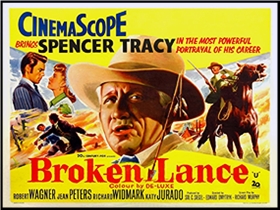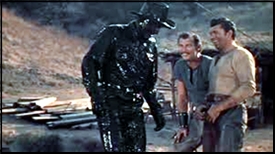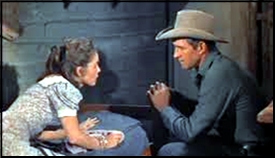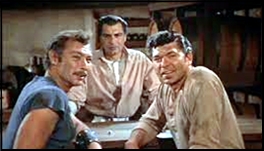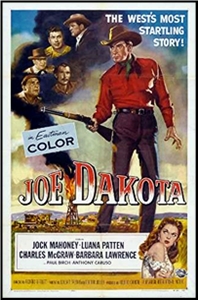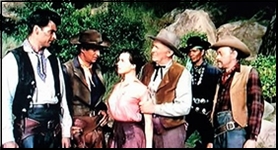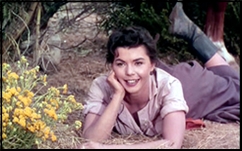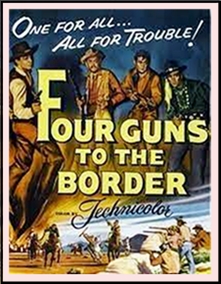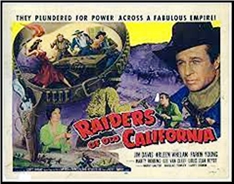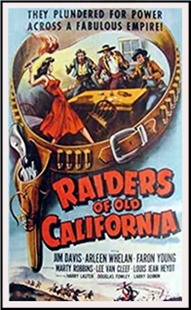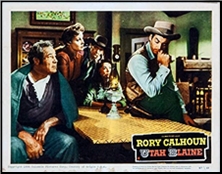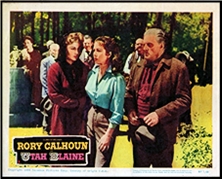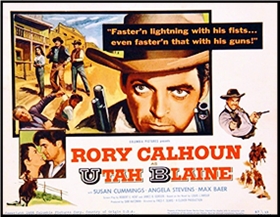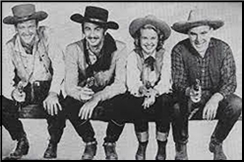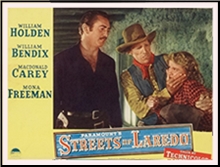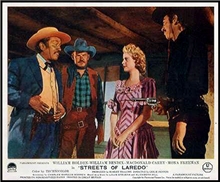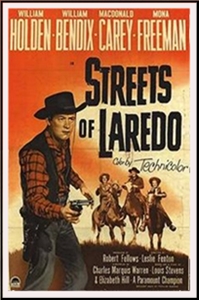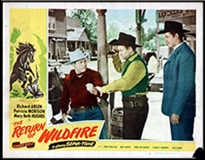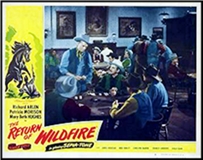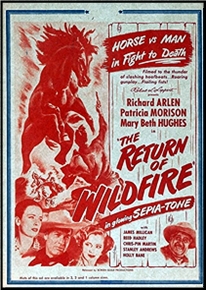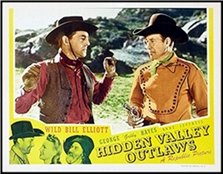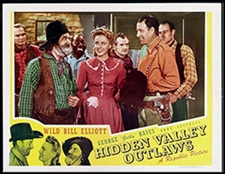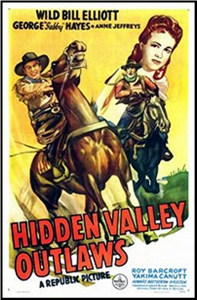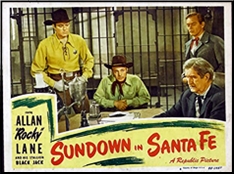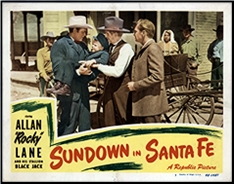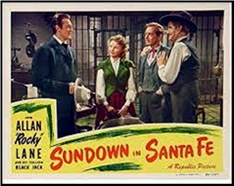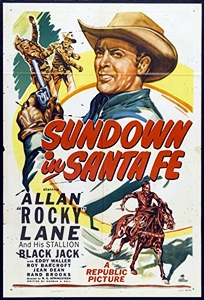Wed 9 Mar 2022
A Western Movie Review by David Vineyard: BROKEN LANCE (1954).
Posted by Steve under Reviews , Western movies[12] Comments

BROKEN LANCE. 20th Century Fox, 1954. Spencer Tracy, Robert Wagner, Jean Peters, Richard Widmark, Katy Jurado, Eduard Franz, Hugh O’Brian, E. G. Marshall, Earl Holliman, Carl Benton Reid. Screenplay by Richard Murphy based on the screenplay for House of Strangers by Philip Yordan. Director: Edward Dmytryk.
By 1954 when this drama of a family in conflict and brothers at each others throats was made, the Western was the dominant form of entertainment in theaters around the country, and the simple morality plays of an earlier era had been replaced with far more complex and adult themes. Novels, histories, and original screenplays were being churned out in great number and it was perhaps natural that Hollywood would turn to its own products for the basis of new material for the seemingly endless demand for new Westerns.
It had already begun in the Post War-era. Raoul Walsh remade his own High Sierra as Colorado Territory, John Ford’s Four Men and a Prayer was remade as Fury at Furnace Creek, Kiss of Death as The Fiend Who Walked the West, Objective Burma as Distant Drums, and soon Asphalt Jungle as Badlanders, The Lost Patrol as The Last of the Comanches, even Gunga Din as Sergeants 3.
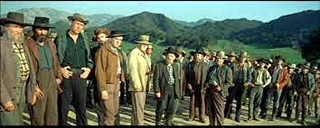
Broken Lance was a remake of Joseph L. Mankiewicz’s 1949 film noir House of Strangers. In that one Edward G. Robinson was the patriarch of an Italian banking family whose favorite son, Richard Conte who loves society woman Susan Hayward, goes to jail to save the old man when he gets in trouble with his high-handed ways only to find his brothers led by Luther Adler out to destroy him and cheat him out of his part of the family fortune when he finishes his prison term.
Here Spencer Tracy is Matt Devereaux, cattle rancher and pioneer who has died while his youngest son Joseph (Robert Wagner) was in prison. Joe’s half brothers Ben, Mike, and Denny (Richard Widmark, Hugh O’Brian, and Earl Holliman Jr.) try to buy him out and send him packing when Joe is released, but Joe still has business and memories to deal with.
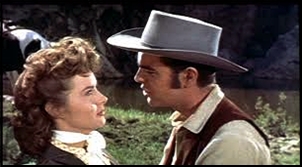
The movie opens with a lobo wolf running wild across the landscape. We will later see Matt refuse to let son Denny shoot the same wolf, and at one point Matt’s Native American foreman (Eudard Franz) tells Joseph that Matt’s spirit runs with the wolves. We see and hear the wolf a final time as the music rises and The End appears hammering home the theme.
The story is told in flashback, and to Mankiewicz’s plot, Dmytryk and screenwriter Richard Murphy add a sub plot about racism and intolerance since Wagner’s Mother (Katy Jurado, who was only six years older than Wagner) is Native American, a source of many not so subtle snubs from Matt’s business partners..
When Old Matt takes on a copper mine poisoning his source of water and destroys the place he finds his friend the territorial governor (E. G. Marshall — and yes the film several times refers to Arizona as a state well before that happened) is unwilling to help him unless he stops Joe from romancing his daughter Barbara (Jean Peters).
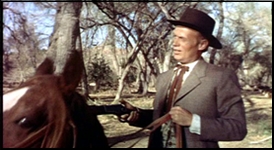
The legal proceedings go badly and Joe volunteers to go to prison to save his father striking a deal to only serve a short sentence if Matt will sell the land to the copper interests, but when the time comes older brother Ben refuses to sign, Joe is sent to prison for three years, and Matt has a stroke confronted by Ben and his brothers refusal to help Joe.
While Joe is in prison the brothers undo everything Old Matt built and eventually cause his death in a well done scene reminiscent of the end of El Cid. But Joe wants no part of fratricide having said his goodbyes to his dead father and is ready to leave when Ben decides he would never sleep well as long as Joe was alive and decides to kill him.
Beautifully shot by cinematographer Joe MacDonald, with a strong score by Leigh Harline, and imaginatively staged by director Edward Dmytryk, Broken Lance is a satisfying adult Western with the shoot ’em up action nicely balanced by family drama, a trial, and Tracy in larger than life scene stealing mode (there are two life sized portraits of Tracy featured in the film I would kill to own).
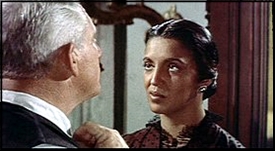
An avid polo player when he was younger Tracy sits a horse well and looks natural in the saddle. At this point he was still active enough to look believable in action scenes.
Widmark is good (when isn’t he?) as Ben the resentful older brother who hates his father enough to destroy every thing and everyone around him including his half brother. O’Brian and Holliman fill out the roles of the two wastrel middle brother well enough though neither has much to do.
Of course Katy Jurado is fine in anything she plays and in this period has one fine role after another. Eduard Franz plays Old Matt’s Native foreman and surrogate father to Wagner’s character with his usual quiet efficiency (he plays a similar role as a tracker in The Burning Hills). Peters, Marshall, Reid are all solid in their various supporting bits as well.
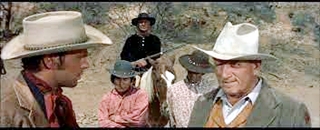
The star here though, despite Tracy’s top billing, is Wagner, who is in almost every scene as the decent loyal son, and holds his own opposite the likes of Tracy (Wagner knew many of the Old Hollywood elites well, including Tracy who he had caddied for when he was younger) and Widmark. He played opposite O’Brian in The White Feather, so this was old home week in some ways.
It’s no easy task for a young actor to even stay on the screen with the likes of Tracy (they played brothers in The Mountain) and Widmark, but he does it with ease. He was always at ease on screen, perhaps too much so for his own growth as an actor, but here he more than manages the unenviable trick of having to hold the screen when viewers are waiting for more of Tracy and Widmark.
Incidentally there is a quiet scene with Tracy and Widmark that is almost a masterclass in two screen naturals subtly battling for screen dominance and coming to a draw without either of them ever once slipping out of character or crossing the obvious line into scene stealing. Widmark’s quiet self assurance on screen with Tracy, expressed in his relaxed posture, even adds to the tension between their characters in the film.
